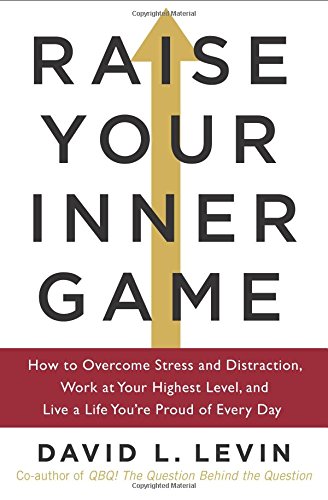

During the last set of balls, Self 1 was fully occupied in watching the seams of the ball. Joan was beginning to sense the difference between “trying hard,” the energy of Self 1, and “effort,” the energy used by Self 2, to do the work necessary. In other words, the key to better tennis-or better anything-lies in improving the relationship between the conscious teller, Self 1, and the natural capabilities of Self 2. Now we are ready for the first major postulate of the Inner Game: within each player the kind of relationship that exists between Self 1 and Self 2 is the prime factor in determining one’s ability to translate his knowledge of technique into effective action. The backhand can be used to advantage only on a tennis court, but the skill of mastering the art of effortless concentration is invaluable in whatever you set your mind to. He will lose his timing and fluidity as he tries to repeat what he has just told you he was doing so well. The next time your opponent is having a hot streak, simply ask him as you switch courts, “ Say, George, what are you doing so differently that’s making your forehand so good today? ” If he takes the bait-and 95 percent will-and begins to think about how he’s swinging, telling you how he’s really meeting the ball out in front, keeping his wrist firm and following through better, his streak invariably will end. The “hot streak” usually continues until he starts thinking about it and tries to maintain it as soon as he attempts to exercise control, he loses it.

The player seems to be immersed in a flow of action which requires his energy, yet results in greater power and accuracy. It just seems to happen-and often with more accuracy than he could have hoped for. One question perplexed me: What’s wrong with trying? What does it mean to try too hard?Ī player in this state knows where he wants the ball to go, but he doesn’t have to “try hard” to send it there. I was beginning to learn what all good pros and students of tennis must learn: that images are better than words, showing better than telling, too much instruction worse than none, and that trying often produces negative results. The most common complaint of sportsmen ringing down the corridors of the ages is, “It’s not that I don’t know what to do, it’s that I don’t do what I know!” All that is needed is to unlearn those habits which interfere with it and then to just let it happen. This process doesn’t have to be learned we already know it. The player of the inner game comes to value the art of relaxed concentration above all other skills he discovers a true basis for self-confidence and he learns that the secret to winning any game lies in not trying too hard.

In short, it is played to overcome all habits of mind which inhibit excellence in performance. This is the game that takes place in the mind of the player, and it is played against such obstacles as lapses in concentration, nervousness, self-doubt and self-condemnation. It is the thesis of this book that neither mastery nor satisfaction can be found in the playing of any game without giving some attention to the relatively neglected skills of the inner game. The outer game is played against an external opponent to overcome external obstacles, and to reach an external goal. “It’s not about the win or the loss if we’re here to experience, then we are free.” IntroductionĮvery game is composed of two parts, an outer game and an inner game. “It’s not about the tennis,” he reminds me. They must clear their minds of all confusion and earn the ability to let themselves play freely. Whether we are preparing for an inter-squad scrimmage or the National Championship Game, these principles lie at the foundation of our program.What is the real game? It is a game in which the heart is entertained, the game in which you are entertained. “Introduced to The Inner Game of Tennis as a graduate student years ago, I recognized the obvious benefits of Gallwey's teachings. Whether you're a beginner or a pro, Gallwey's engaging voice, clear examples, and illuminating anecdotes will give you the tools you need to succeed. build skills by smart practice, then put it all together in match play.find the state of “relaxed concentration” that allows you to play at your best.focus your mind to overcome nervousness, self-doubt, and distractions.
Download the inner game of tennis pdf how to#
Timothy Gallwey, a leading innovator in sports psychology, reveals how to Not just for tennis players, or even just for athletes in general, this handbook works for anybody who wants to improve his or her performance in any activity, from playing music to getting ahead at work. With more than 800,000 copies sold since it was first published thirty years ago, this phenomenally successful guide has become a touchstone for hundreds of thousands of people.


 0 kommentar(er)
0 kommentar(er)
